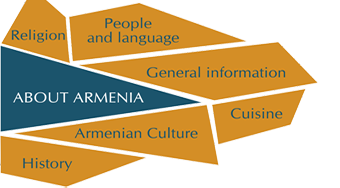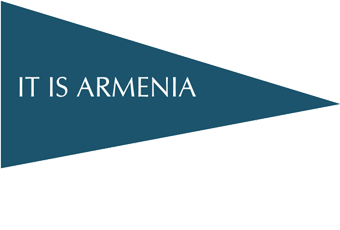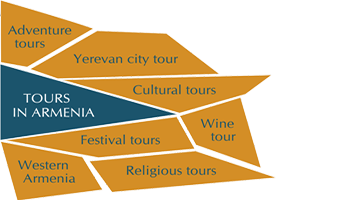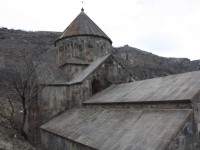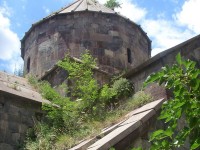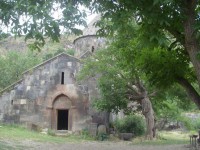Gndevank
Gndevank is located in the Marz (region) of Vayots Dzor, on the left bank of the river Arpa, in the highland locality, 1 km to the west of the village of Gndevaz. The monastery was founded in 931, as hermits Priory by the wife of the Syunik’s count Smbat and the countess Sophia, the sister of the Vaspurakan’s King Gagik Artsruni and was named Gndevank after the abbot Suphan Gnduni. According to another interpretation, the countess had sold her earrings (in Arm. guind) in order to finish the construction works of the Church and because of it the monastery was called Gndevank. The group of monuments represents a construction dating from the 10th-17th centuries and including the St. Stephanos Church, the gavit (narthex) , the refectory, the cemetery, the economic and residential buildings, canal. The territory is fenced round. According to the legend, the countess Sophia went to the canyon called Gndevank, where the bones of many saint martyrs were found and many monks and nuns lived. The latters were engaged in medicine. They healed the Countess Sophia’s daughter and the countess decided to build there a church for them. And she built the church, founded the village on the cliffs and planted a garden... In one of the inscriptions of the monastery the countess Sophia mentioned: “The Marz (region) of Vayots dzor was a ring without a gemstone, I built it and put a gemstone on it”. The constructions were led by the painter Yeghishe Yerets. The St. Stephanos church was built in 931-936. The structure is made of the hewn basalt. It has four altars and outwardly has composition of cruciform central dome. Yeghishe Yerets decorated the interior part of the church with frescoes. A small fragment of the picture of Christ is still preserved on the wall of the altar. There are the high reliefs of four evangelists inside of the church, on pendentives of the dome. The church has four altars, on the outside it is a cruciform building with a central dome and has two eastern vestries. There were also frescoes, authored by the painter Yeghishe Yerets (the 10th century). The figures pictured above the entrances of the vestries are works of a later period. The abbot Christopher built the western gavit (narthex) of the church in 999. Along the length of the north wall of the gavit (narthex) two rooms with rectangular plan are arranged. The western room used to serve as a library. By the efforts of Abbot Sarkis in 1008 was built a 22 km length canal to irrigate monastic lands, which functions to the present days. In 1691 Petros Vardapet (teacher) renovated the church and the gavit (narthex), built a fence around the monastery and the economic and residential buildings in the adjacent area. It was then, that the fresco with Mary’s (mother of Jesus) picture on the northern wall of the church’s vestry was painted. This is one of the best works of Armenian art of the late medieval period. The other frescoes, unfortunately, were decayed because of the dampness in recent decades. There are khachkars (cross-stones) and tombstones of 10th-16th centuries in the territory of Gndevank. Many lithographic inscriptions have also been preserved there.





